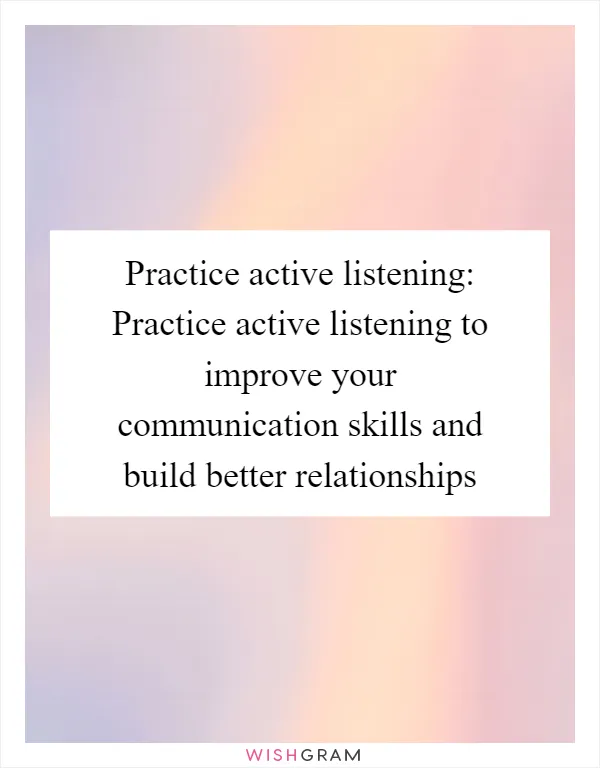Practice active listening: Practice active listening to improve your communication skills and build better relationships
Active listening is a valuable skill that can greatly enhance your communication abilities and help you build stronger relationships. By actively listening, you demonstrate genuine interest in what others have to say, fostering a deeper connection and understanding. This practice involves more than just hearing the words being spoken; it requires focused attention and engagement.
To practice active listening, start by giving your full attention to the speaker. Put away distractions such as your phone or other devices, and maintain eye contact to show that you are fully present. By doing so, you convey respect and create a comfortable environment for open communication.
Another important aspect of active listening is to avoid interrupting or interjecting your own thoughts while the speaker is talking. Instead, patiently wait for them to finish before responding. This demonstrates that you value their perspective and are willing to give them the space to express themselves fully.
Additionally, it is crucial to show empathy and understanding during conversations. Try to put yourself in the speaker's shoes and imagine how they might be feeling. Reflecting on their emotions and acknowledging them can help create a safe space for open dialogue. Responding with empathy shows that you genuinely care about their experiences and opinions.
As an active listener, it is essential to ask clarifying questions to ensure you fully comprehend what the speaker is saying. This not only helps you understand their message better but also shows that you are actively engaged in the conversation. By seeking clarification, you can avoid misunderstandings and demonstrate your commitment to effective communication.
Paraphrasing and summarizing the speaker's points are also effective active listening techniques. By restating what you have understood, you confirm your comprehension and allow the speaker to clarify any misconceptions. This approach fosters a sense of collaboration and encourages the speaker to share more openly.
Remember, active listening is not limited to verbal communication. Non-verbal cues, such as nodding, smiling, and using appropriate facial expressions, can also convey your attentiveness and interest. These non-verbal signals can help the speaker feel more comfortable and understood.
By practicing active listening, you can improve your communication skills and build better relationships. It allows you to connect with others on a deeper level, fostering trust and mutual respect. Whether in personal or professional settings, active listening is a valuable tool that can lead to more meaningful and effective interactions.
So, the next time you find yourself in a conversation, make a conscious effort to practice active listening. Give your undivided attention, show empathy, ask clarifying questions, and provide feedback
